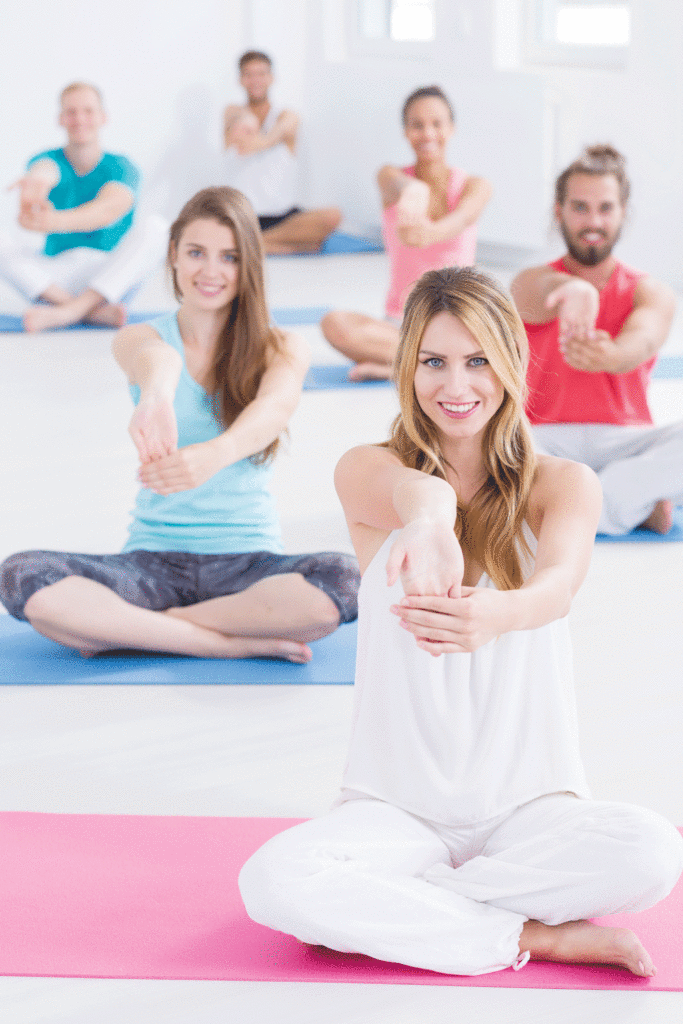
Sitting in an upright, aligned position allows your chakras — simply defined as the spinning wheels of energy in the body — to be open.
We are always moving … going … doing.
From the moment our feet hit the floor after waking to a screaming alarm we are already fighting against our brain.
Even before our day has started we have forced our body to unnaturally wake up going against its normal physiological cycle.
From there our schedules take off in opposite directions: Must get the kids ready for school, must get the presentation in by 8 a.m., traffic jams, speeding ticket, parking lot is full. No time for lunch, did I even pack the kids lunch? Proceed to make a call to the husband beg for him to take the kids lunch, then remember your breakfast was just coffee and Advil.
Swing into a fast food joint with the seven extra minutes you have and inhale a cold, tasteless slab of something on a bun.
Meetings, phone calls, “did I schedule the dogs’ vet appointment the same day of my kids dental checkups?” Tank is on empty, wait in the line for gas, can’t find debit card.
Phone is buzzing on the dashboard, no time to pick that up, put the gas on my credit card and make a mental note to stop using credit cards. “Did I even pay the credit card bill this month?!” Try in vain to power through the final couple hours at work, eyes are burning, head is pounding and there is nothing in the fridge for dinner.
Only six more hours to go until collapsing into bed and wait for the alarm to scream again.
Sound familiar?
Stop. It’s no wonder we are so stressed out, maxed out and on edge. We feel tired all the time but can’t sleep because our brain is constantly spinning over what is happening next.
We owe ourselves our own time — a regimen of self-care.
Chronic stress is a direct contribution to heart attacks, major illness, anxiety, insomnia, depression, substance abuse and even obesity from over-eating in an attempt to provide comfort.
Yet even with all of these associations the American Psychological Association reveals at least 33 percent of Americans never mention stress as a problem to their physicians.
If there was only a way to “turn off” our brains for a bit and allow them to reset themselves and return to life and all its moving, going and doing with a fresh approach.
If only we could give our mind and body a break. You can.
Meditation is a “practice where an individual operates or trains the mind or induces a mode of consciousness to allow the mind to engage in peaceful thoughts. It is used to clear the mind, reduce stress and promote relaxation.
It may be done while sitting, repeating a mantra, and closing the eyes in a quiet environment.”
It literally dates back to ancient history.
A less-clinical version is turning your attention to a single point of reference.
This may be breathing and focusing entirely on the way air enters and leaves the body, noting body sensations from the crown of your head to your toes, or even a mantra — a word or phrase that means something to you: “I am enough” for example.
Ray Davis, a registered yoga instructor at Eastern Shore Yoga in Easton has been meditating for the past three years.
“I believe it has helped me in so many ways, starting with I am a completely different person. I can concentrate … put myself out there more. In the past I have suffered terribly from anxiety and panic attacks. The anxiety now is rare. I was even a little obsessive compulsive and that is less. I hoped for a little and gained a lot.”
Davis says meditation has been proven to not only lower stress and anxiety, but blood pressure as well. “I started meditating when I was enrolled in a Ayurveda immersion. Ayurveda is the sister science to Yoga … the science of life. Generally I meditate for a half hour in the morning before the sun rises. That is the most balanced time for energy.” When citing additional spiritual benefits of meditation Davis said, “Most people can relate to the mind and the body … but the spirit is a far more subtle idea to grasp. For me, personally, to sit in meditation with the body still and the mind quiet I realize the true me is what is left. That witness to creation, that unchanging universal consciousness, that is and always will be.” Just reading that aids in relaxation, doesn’t it?
So you have an open mind (no pun intended) and are willing to give meditation a shot but have no clue where to begin and how to do it? Davis said even he started with five minutes.
Don’t we all have five minutes?
Find somewhere that is quiet, free from distraction and comfortable to you. It is best to be sitting upright on the floor, on a cushion, chair or even your bed.
Place your hands where they fall naturally, possibly open on your knees or resting comfortably on your lap. Sitting in an upright, aligned position allows your chakras — simply defined as the spinning wheels of energy in the body — to be open.
“When all of the chakras are spinning freely we experience health and vitality.” Davis said.
Once comfortable find one focal point … the breath, a bodily sensation or repeat a mantra you have chosen.
I am enough.
For more information on class schedules at Eastern Shore Yoga in Easton visit easternshoreyogamd.com, find them on Facebook or call them at 410-924-0919.
If taking a class isn’t your cup of tea, check out calm.com where you can even download an app for a guided 10 minutes of meditation.
Calm app has a free “7 Days of Meditation” to get started.



